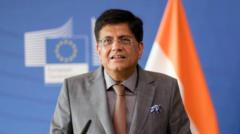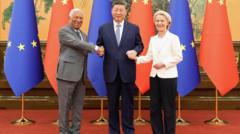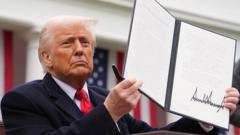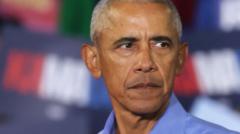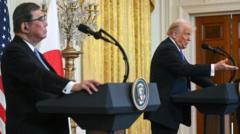In May 2025, Trump outlines plans indicating a potential shift in international power balance that harkens back to 19th-century imperialism.
Trump's Geopolitical Vision: A Resurgence of Power Dynamics

Trump's Geopolitical Vision: A Resurgence of Power Dynamics
President Trump's strategy hints at a world dominated by the U.S., China, and Russia, aiming for increased trade and influence.
President Trump has recently signaled a desire to enhance America's standing globally, specifically regarding China and Russia, as he contemplates a world where the United States, China, and Russia wield dominance in their respective spheres. His remarks about normalizing trade with Russia—while de-escalating pressure regarding the Ukraine conflict—reflect an ambitious diplomatic intent.
During a recent interview, Trump suggested, “We all want to make deals... I am this giant store. It’s a giant, beautiful store, and everybody wants to go shopping there.” This sentiment underscores a willingness to engage in negotiations that could reshape international relations.
Analysts interpret Trump's strategy as the formulation of a structured triad of powers reminiscent of imperial dynamics from over a century ago. His aspirations for U.S. territorial expansion—seeking control over Greenland, Canada, and the Panama Canal—are particularly indicative of this vision for establishing American hegemony within the Western Hemisphere.
By advocating for these measures, Trump appears to be drawing lines of influence that challenge existing geopolitical orders, seeking to solidify America's role as a primary actor alongside China and Russia on the world stage. As geopolitical tensions evolve, the implications of such a triadic dominance could alter the fabric of international relations significantly, evoking both opportunity and apprehension across global landscapes.






